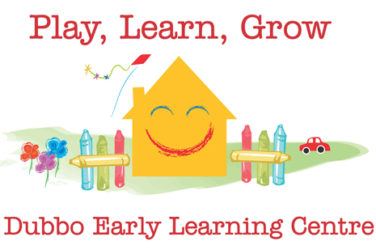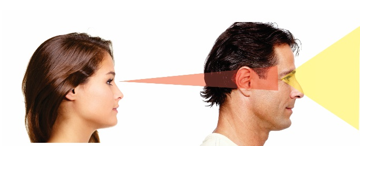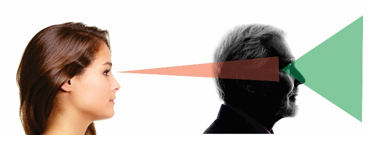A rating of Exceeding NQS means going above and beyond what is expected at the Meeting NQS level for a standard. The following three themes must be demonstrated in service practice for a standard to be rated as Exceeding
Theme 1: Practice is embedded in service operations
Theme 2: Practice is informed by critical reflection
Theme 3: Practice is shaped by meaningful engagement with families and/or the community.
To be rated Exceeding NQS in a quality area, all standards in that quality area must be rated Exceeding NQS. There are no changes to the way the overall rating for Exceeding NQS is calculated. To be rated Exceeding NQS overall, all quality areas must be at least Meeting NQS, and four or more Quality Areas must be Exceeding NQS, with at least two of these being quality areas 1, 5, 6, or 7.
Hi Girish please make a drop box accordion here with the 15 standards ie 1.1, 1.2
Standard 1.1
Exceeding theme 2: Practice is informed by critical reflection.
The service’s approach to curriculum decision-making:
- reflects robust debate, discussion, and opportunities for input by all educators, and is informed by critical reflection and past incidents
- is informed by current recognised guidance.
Any change to the service’s approach to curriculum decision-making is understood by all and implemented appropriately.
All educators, the educational leader and co-ordinators regularly reflect, individually and with each other on:
- opportunities to strengthen the educational program
- implementation of changes to the program to enhance children’s learning and development outcomes, including through the organisation of daily routines
- the evolving knowledge, strengths, ideas, cultures, abilities and interests of children at the service, and how these inform the educational program
- social justice and equity implications of curriculum decisions to ensure that the program considers the circumstances and rights of every child at the service
- opportunities to cultivate deep respect for, and knowledge of, the cultural diversity of the broader community in the educational program, including Aboriginal and Torres Strait Islander histories and cultures
- the theoretical and philosophical influences on their curriculum decisions, including the theoretical perspectives identified in the approved learning framework/s
- how they draw on theoretical and philosophical influences and how they have influenced practice over time.
Standard 1.2
Exceeding theme 2: Practice is informed by critical reflection.
The service’s educational practice approach to facilitating and extending children’s learning and development:
- reflects robust debate, discussion, and opportunities for input by all
- educators, and is informed by critical reflection and past incidents
- is informed by current recognised guidance.
Any change to the service’s approach to facilitating and extending children’s learning and development is understood by all and implemented appropriately.
All educators and the educational leader regularly reflect, individually and with each other on:
- their educational practice approach to facilitating and extending children’s learning and development
- alternate practice approaches to facilitating and extending children’s learning and development
- implementation of changes to strengthen their practice over time
- social justice and equity implications of their educational practice to ensure that practice considers the circumstances and rights of every child at the service
- opportunities to cultivate deep respect for, and knowledge of, the cultural diversity of the broader community in educational practice, including Aboriginal and Torres Strait Islander histories and cultures
- theoretical and philosophical influences on their practice, including the theoretical perspectives identified in the approved learning framework/s
- how they draw on theoretical and philosophical influences and how they have influenced practice over time.
Standard 1.3
Exceeding theme 2: Practice is informed by critical reflection.
The service’s approach to assessment and planning:
- reflects robust debate, discussion, and opportunities for input by all educators, and is informed by critical reflection and past incidents
- is informed by current recognised guidance.
Any change to the service’s approach to assessment and planning is understood by all and implemented appropriately.
All educators, the educational leader and co-ordinators regularly reflect, individually and with each other on:
- their approach to assessment and planning to consider whether it supports the best outcomes for children and families
- engagement with families and whether communication of the education program and children’s participation, learning and development is accessible and understandable
- alternate assessment and planning processes, and make changes where opportunities for improvement are identified
- social justice and equity implications of their assessment and planning to ensure that practice considers the circumstances and rights of every child at the service
- theoretical and philosophical influences on their assessment and planning, including the theoretical perspectives identified in the approved learning framework/s
- how they draw on theoretical and philosophical influences and how they have influenced practice over time.
Standard 2.1
Exceeding theme 2: Practice is informed by critical reflection.
Educators, the educational leader and co-ordinators:
- systematically and regularly reflect on opportunities to enhance each child’s health outcomes and promote physical activity with children and families
- seek out and consider alternate ways of supporting each child’s health and activity needs, and make changes where opportunities to further enhance children’s outcomes are identified
- are able to explain how reflection on children’s changing health and activity needs influences the design and delivery of the educational program
- reflect together on health and illness-related incidents, and support the service to make changes to practices, policies and procedures where opportunities are identified to strengthen the approach
- are aware of and able to discuss the influences on their approach to supporting and promoting children’s health and activity requirements and outcomes, the recognised guidelines that underpin their practice approach, and how these build on the approved learning framework/s and the service’s health policies and procedures
- consider and discuss social justice and equity implications of their practice decisions to ensure that practice takes into account the needs and rights of every child at the service
The service’s approach to supporting and promoting children’s health and activity needs and outcomes reflects robust debate, discussion, and opportunities for input by all educators, and is informed by critical reflection on past incidents
The service’s approach to supporting and promoting children’s health and physical activity, including safe sleep and nutrition, is informed by current recognised guidelines and up-to-date information
Any change to the service’s approach to supporting and promoting children’s health and activity needs are understood by all andimplemented appropriately.
Standard 2.2
Exceeding theme 2: Practice is informed by critical reflection
Educators, the educational leader and co-ordinators:
- systematically and regularly reflect, individually and as a team, on practices to support child safety, including risk assessment and emergency management procedures and practices, and make changes when opportunities to further enhance children’s outcomes are identified
- are responsive and adjust supervision strategies as required
- are able to explain how an ongoing commitment to children’s safety influences the design and delivery of the educational program
- reflect together on safety-related incidents, and support the service to make changes to practices, policies and procedures where opportunities are identified to strengthen the approach
- are aware of and able to discuss the influences on their practice to support and promote children’s safety, including recognised guidelines, information sources, and other legislation that underpin their practice approach, and how these align with the approved learning framework/s and the service’s policies and procedures
- consider and discuss social justice and equity implications of their practice decisions to support and promote each child’s safety to ensure that practice takes into account the needs and rights of every child at the service
The service’s approach to risk assessment, emergency management and child protection reflects current recognised guidelines and up-to-date information from trusted sources.
The service’s approach to supporting and promoting children’s safety reflects robust debate, discussion, and genuine opportunities for input by all educators and is informed by critical reflection on past incidents.
Any change to the service’s approach to supporting and promoting children’s safety are understood by all.
Standard 3.1
Exceeding theme 2: Practice is informed by critical reflection
The service’s approach to design and maintenance of the physical environment:
- reflects robust debate, discussion, and opportunities for input by all educators, and is informed by critical reflection and past incidents
- is informed by current recognised guidance on creating an inclusive, safe physical environment that strengthens children’s learning and development outcomes and enhances participation in the program.
Any change to the service’s approach to design and maintenance of the physical environment is understood by all and implemented appropriately.
Educators, the educational leader and co-ordinators:
- are attuned to changes to the physical environment throughout the day and confidently adjust practice and the environment as needed to ensure the continued safety, participation and inclusion of all children
- reflect, individually and together, on the design of the physical environment, and consider opportunities to make changes to strengthen inclusion and participation, and to enhance children’s safety, learning and development outcomes
- are aware of and able to discuss the theoretical influences on the service’s design choices and how these align with the approved learning framework/s and the service’s philosophy, policies and procedures
- consider and discuss social justice and equity implications of design choices to ensure that the physical environment supports the needs and rights of every child at the service.
Standard 3.2
Exceeding theme 2: Practice is informed by critical reflection
The service’s approach to organising inclusive, play-based learning environments and to supporting environmental responsibility:
- reflects robust debate, discussion, and opportunities for input by all educators, and is informed by critical reflection
- is informed by current recognised guidance.
Any change to the service’s approach to organising inclusive, play-based learning environments and to supporting environmental responsibility is understood by all and implemented appropriately.
All educators regularly reflect on opportunities to:
- support every child’s participation and to further enhance children’s learning and development through the creative and flexible use of space, equipment and resources
- support children’s environmental awareness and responsibility.
The service team reflect together on opportunities to:
- further enhance children’s learning and development through the creative and flexible use of space, equipment and resources
- strengthen the service’s engagement in environmental sustainability, and work together to implement agreed changes across the service.
Standard 4.1
Exceeding theme 2: Practice is informed by critical reflection
The service’s approach to organisation and continuity of educators:
- reflects robust debate, discussion, and opportunities for input by all educators, and is informed by critical reflection and past incidents
- is informed by the qualifications, strengths, priorities and professional development goals of educators
- is informed by current recognised guidance.
Any change to the service’s approach to organisation and continuity of educators is understood by all and implemented appropriately.
The service team:
- reflects together on opportunities to further enhance children’s wellbeing, learning and development through possible changes to the organisation of educators or improvement in staff continuity
- works together to implement agreed changes across the service where necessary.
Standard 4.2
Exceeding theme 2: Practice is informed by critical reflection.
The service’s approach to professional collaboration and standards:
- reflects robust debate, discussion, and opportunities for input by all educators, and is informed by critical reflection and past incidents
- enables and promotes regular opportunities for all members of the service team, with special consideration to support newly inducted educators, to work collaboratively and to share and learn from each other’s existing and developing strengths and skills
- is informed by current recognised guidance and the service’s chosen code of conduct and code of ethics
The service team reflects together:
- on the role and application of professional ethics and standards across the service
- on ethical issues that arise in the service
- to consistently identify and implement opportunities to strengthen ethical practice.
Educators reflect collaboratively on pedagogical knowledge and curriculum delivery.
Educator’s discussions and notes demonstrate:
- self-awareness of the ethical and professional standards underpinning their own practice
- ongoing reflection on opportunities for improvement.
Decision-making processes are informed by professional standards, including the service’s chosen code of conduct and code of ethics.
Changes to the application of professional standards within the service, including the chosen code of conduct and code of ethics, are clearly understood by all.
Standard 5.1
Exceeding theme 2: Practice is informed by critical reflection
The service’s approach to relationships between educators and children:
- reflects robust debate, discussion, and opportunities for input by all educators, and is informed by critical reflection and past incidents
- is informed by current recognised guidance.
Any change to the service’s approach to relationships between educators and children is understood by all and implemented appropriately.
All educators:
- systematically reflect on their interactions with children across the service and on opportunities to further enhance children’s lifelong learning and sense of belonging within the service and the child’s world
- demonstrate self-awareness and are purposeful in the consideration of the theoretical perspectives that influence their pedagogy and the practice across the service.
The service team reflect together to:
- consider the social justice and equity implications of educators’ approaches to relationships with children to ensure interactions support the dignity, rights, cultures and best interests of all children, including children who identify as Aboriginal and Torres Strait Islander peoples
- challenge stereotypes and biases in promoting and maintaining a culture of inclusiveness
- engage in robust debate and discussion in which personal, professional and organisational values that influence relationships between educators and children are identified and discussed.
Standard 5.2
Exceeding theme 2: Practice is informed by critical reflection
The service’s approach to supporting children to build and maintain sensitiveand responsive relationships:
- reflects robust debate, discussion, and opportunities for input by all educators, and is informed by critical reflection and past incidents;
- enables the identification and implementation of opportunities to strengthen practice;
- is informed by current recognised guidance.
Any change to the service’s approach to supporting children to build and maintain sensitive and responsive relationships is understood by all and implemented appropriately.
Educators demonstrate self-awareness of the theoretical perspectives that influence their pedagogy, and the practice across the service, and show that they are committed to continuous improvement.
The service team reflect together to:
- consider the social justice and equity implications of educators’ approaches to facilitating active and collaborative learning opportunities and behaviour guidance;
- engage in robust debate and discussion in which personal, professional and organisational values that support children to build and maintain sensitive and responsive relationships are identified and discussed.
Standard 6.1
Exceeding theme 2: Practice is informed by critical reflection
The service’s approach to supporting relationships with families:
- reflects robust debate, discussion, and opportunities for input by all educators, and is informed by critical reflection and past incidents
- is informed by current recognised guidance on supporting relationships with families
Any change to the service’s approach to supportive relationships with families is understood by all and implemented appropriately
Educators, co-ordinators and the educational leader:
- Intentionally consider alternate ways of engaging with families and supporting their participation at the service, and make changes where opportunities to further enhance children’s and families’ outcomes are identified
- are able to explain how ongoing engagement with families influences the design and delivery of the educational program
- are aware of and able to discuss how the approach to engaging with families and supporting their participation at the service aligns with practice theory, the approved learning framework/s and the service’s philosophy, policies and procedures
- are aware of how families’ perceptions of their role influences how they participate in the service
- consider and discuss social justice and equity implications of their approach to engaging with and supporting each family’s participation in the service, including self awareness of their own biases and how these may impact on building respectful relationships with families
As a team, educators, co-ordinators and the educational leader engage in robust debate and discussion about the service’s approach to engaging with families and supporting their participation at the service. As part of this debate and discussion, personal, professional and organisational values that influence practice are identified, discussed and challenged.
Standard 6.2
Exceeding theme 2: Practice is informed by critical reflection
The service’s approach to collaborative partnerships:
- reflects robust debate, discussion, and opportunities for input by all educators, and is informed by critical reflection and past incidents
- is informed by current recognised guidance on collaborative partnerships.
Any change to the service’s approach to collaborative partnerships is understood by all and implemented appropriately
Educators, co-ordinators and the educational leader:
- purposefully consider and create opportunities to strengthen the service’s approach to enhancing children’s inclusion, learning and wellbeing, and seek out new links and partnerships where opportunities to further enhance children’s and families’ outcomes are identified
- are able to explain how ongoing community engagement influences the design and delivery of the educational program and supports children’s learning, wellbeing and enables full participation in the program for every child
- are aware of and able to discuss how the service’s approach to inclusion support and supporting transitions between learning environments aligns with practice theory, the approved learning framework/s and the service’s policies and procedures
- consider and discuss social justice and equity implications of their approach to inclusion support and supporting transitions for all children, including self awareness of their own biases and how these may impact on child and family outcomes
- challenging stereotypes, raising awareness of, and cultivating deep respect for Aboriginal and Torres Strait Islander histories and cultures
As a team, educators, co-ordinators and the educational leader engage in robust debate and discussion about the service’s approach to building community partnerships and supporting inclusion and transitions. As part of this debate and discussion, personal, professional and organisational values that influence practice are identified, discussed and challenged.
Standard 7.1
Exceeding theme 2: Practice is informed by critical reflection
Any change to the service’s approach to governance is understood by all and implemented appropriately
Educators, co-ordinators and those with management responsibilities:
- critically reflect on the statement of philosophy, individually and together, to ensure it aligns with the service’s current purpose, priorities, and approach to practice, and make changes where required to strengthen alignment and drive continuous improvement
- engage in regular reviews of systems, policies and procedures to ensure they are effective, align with quality practice, are responsive to feedback identified through the service’s risk management and quality improvement systems, and support consistent, high quality practice across the service
- are aware of and able to discuss the service’s governance and decision making processes and how these align with professional standards and contribute to continuous quality improvement
The service supports and enables all members of the service team to provide feedback on opportunities to strengthen governance and administrative systems, including decision-making processes, and this feedback is respectfully considered
Change processes are managed sensibly and collaboratively with key stakeholders and the rationale for change is clearly communicated
Standard 7.2
Exceeding theme 2: Practice is informed by critical reflection. The service’s approach to leadership:
- reflects robust debate, discussion, and opportunities for input by all educators, and is informed by critical reflection and past incidents;
- is informed by current recognised guidance on leadership that supports the operation of a quality service.
Any changes to the service’s approach to leadership is understood by all and implemented appropriately
The leadership team regularly reflects on the service’s quality improvement processes and makes changes where opportunities are identified to enhance outcomes for the service team, children and families
All members of the service team:
- regularly reflect on their own learning and professional development goals and opportunities to strengthen their performance and practice, and share their insights through informal and formal performance discussions to support alignment of expectations and goals;
- systematically reflect, individually and as a team, on service performance in relation to the National Quality Standard, focus areas identified in the Quality Improvement Plan, and goals for teaching and learning to ensure the service is meeting its own and the regulatory system’s expectations for high quality and continuous improvement
The service supports and enables all members of the service team to provide feedback on quality improvement processes and this feedback is respectfully considered
Change processes are managed sensitively and collaboratively with key stakeholders and the rationale for change is clearly communicated.









